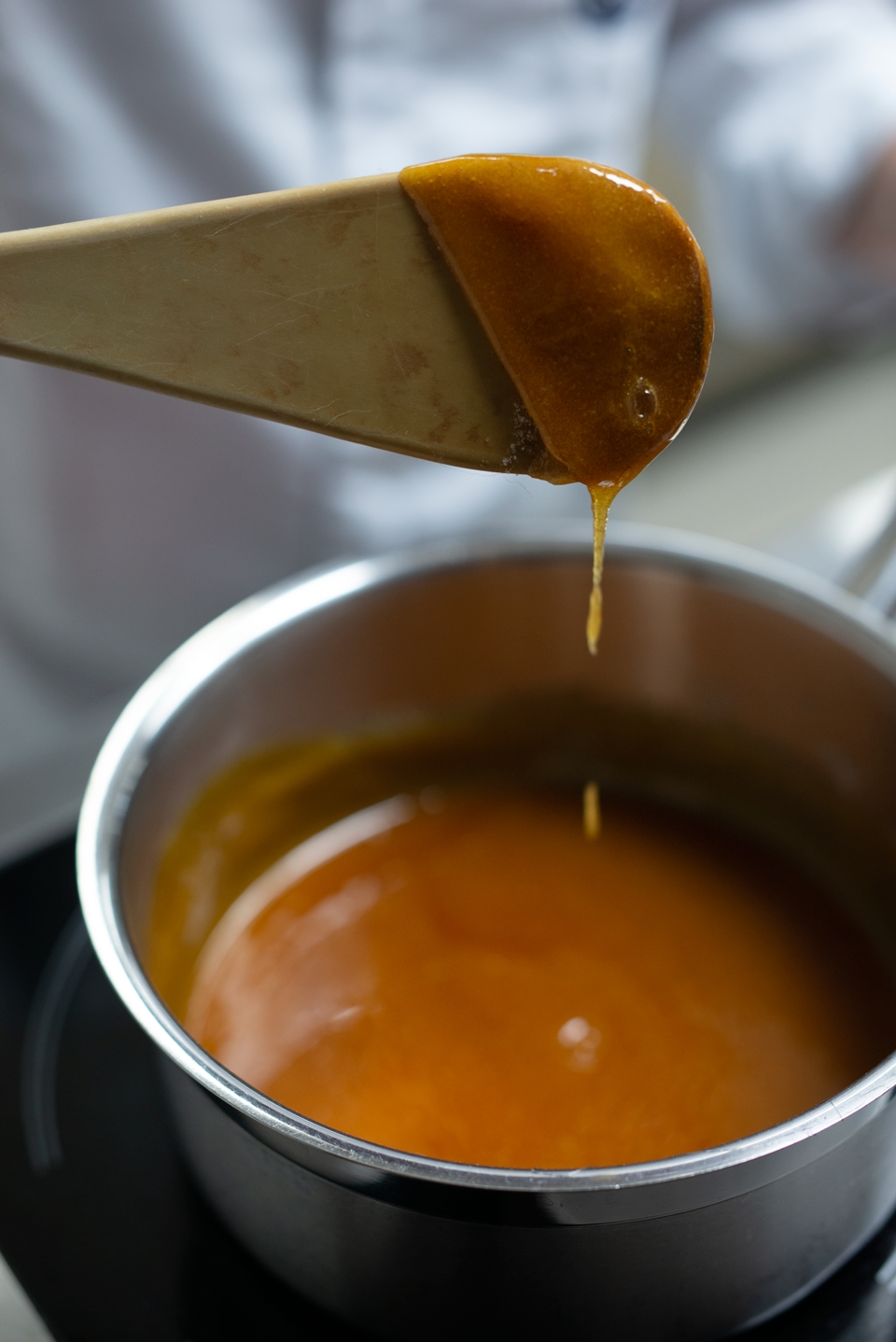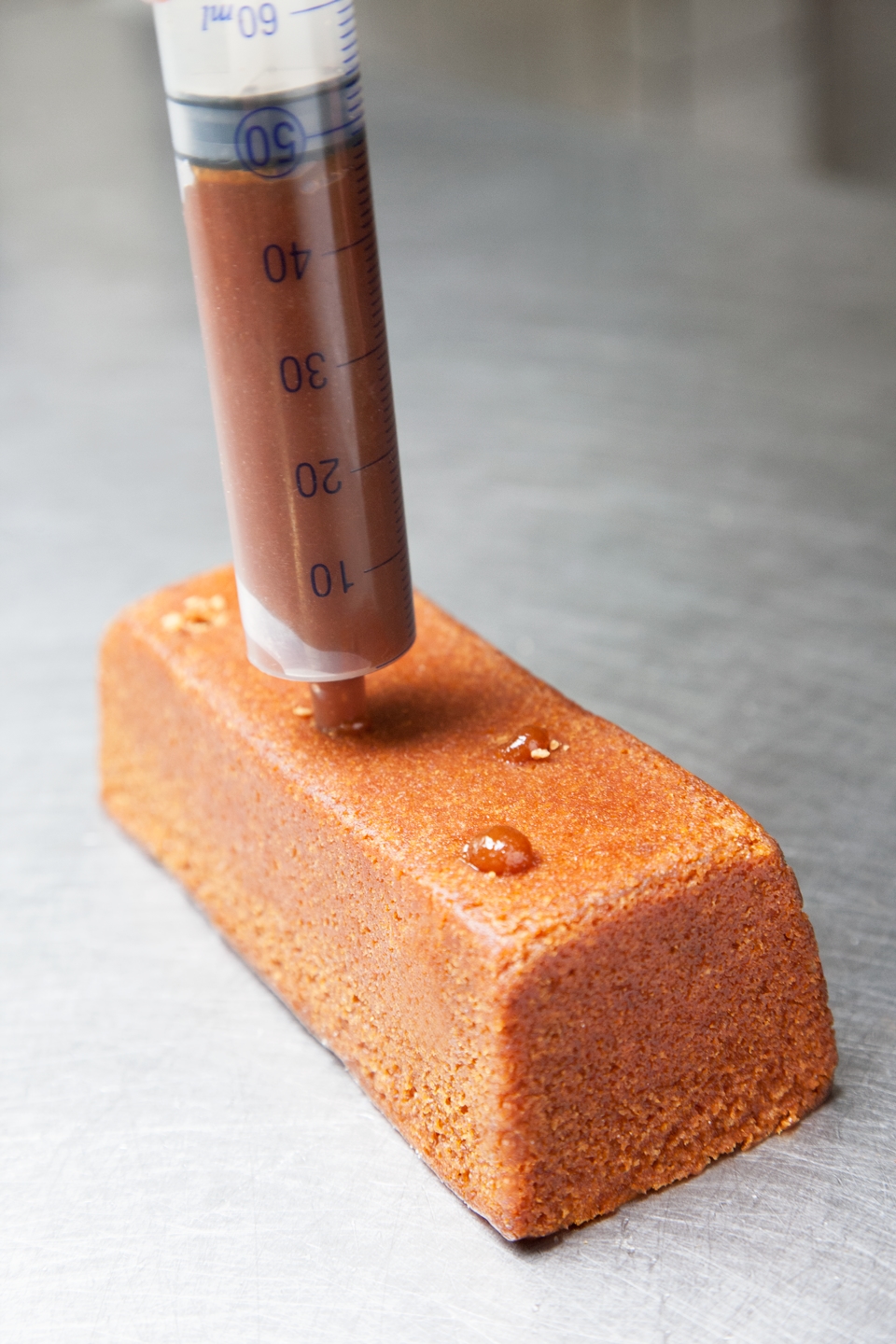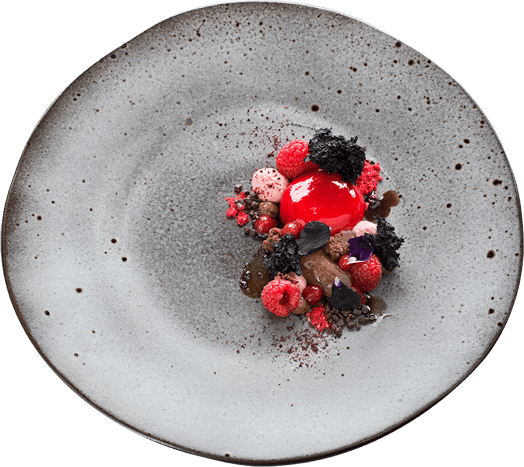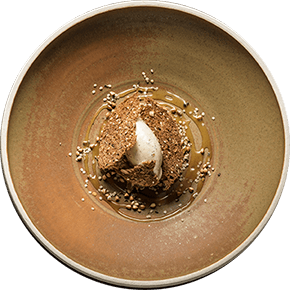Caramel: The golden seduction
Back from never having been away, this very first candy and the favourite sweet for centuries of all generations and nationalities. Some recipes go back to the 11th century, when Arabs manufactured a kind of syrup from cane sugar, whitened and cleaned with chalk, known as Khurat al Mih (caramel). In the 17th century, confectioners and circus nomads prepared a fragile, almost burned version of this candy. Through experimentation, they discovered that adding other ingredients such as milk, coconut, butter, oil, fruit and spices affected the colour, taste and softness.

Today caramel is used around the world for flavouring, as a filling or topping and especially for the professional chocolate and candy industry. Soft, chewy, toffee-like and sticky. The choice depends on the use to which it will be put.
Caramel is available in different varieties, e.g. fudge (softer caramel with salted butter), fruit caramel (soft to liquid caramel) and chewy caramel. These caramel variants can be pimped by adding various ingredients such as chocolate, cocoa powders, crunchy nuts, fruit purée, dry fruit pralines and pastas.
Caramelization is a chemical process. It consists of browning sugar. This process gives the food the characteristic nutty aromatic flavour and golden colour. Caramel is the extreme cooking point of saccharose (187°C), where it reaches the peak before the subtlety turns into bitterness.

We can divide caramel into two groups: hard or dry caramel & soft caramel.
Dry caramel is not only used for decorating but is also the ingredient for making hazelnut praliné, brésilienne or to decorate croquembouche and as a base for all kinds of syrup. Soft caramel is used especially in applications in the pastry and chocolate industry.
A golden brown caramel can be reached by two basic techniques.
Back to the basics, the classic way still used by many artisans is to melt the glucose syrup in a heavy-bottomed stainless steel pan (preferably copper) and adding the castor sugar bit by bit while gently stirring continuously with a wooden spoon, to prevent lumps.
Nowadays, all techniques can be applied with less hand labour or digital machine support. By making a sugar solution with water, the risk of lumps or bitter parts in the caramel can be minimized by controlling the cooking and colouring process.
Reducing the foam or adding the cream into the caramel can also be done in different ways. The best-known technique is heating the cream and pouring it over the hot caramel. The thermal shock is less drastic than with the cold method, but on the other hand the cold method will preserve more subtlety in taste.
The Debic method combines both visions or approaches. By whipping the cream to a foamy mass, later added to the foamy caramel, the risk of splitting will be minimalized and all aroma molecules will be preserved.

Basic Caramel
INGREDIENTS
- 1 kg sugar
- 150 g glucose syrup
- 500 g Debic Cream 35%
- 5 g coarse salt
- 700 g Debic Cake Butter
PREPARATION
Caramelize the glucose and sugar to a dark blond colour. Reduce the boiling caramel with the cream and salt (+/- 60°C). Bring back to a boil at 125°C. Add the cold butter in cubes and mix with a hand blender.

Caramel beurre salé (cake filling)
INGREDIENTS
- 450 g sugar
- 150 g water
- 75 g glucose
- 135 g Debic Constant Butter
- 450 g Debic Cream 40%
- 1 vanilla pod
- 4 g coarse salt
PREPARATION
Pre-heat the pan during 1 minute and put the glucose syrup in the pan. Add the sugar and the water and bring to a boil. Continue until you obtain a golden brown caramel. Add the butter cubes (cold), the coarse salt and stir firm, follow with the semi whipped cream and vanilla seeds. Boil to 117°C and store.



